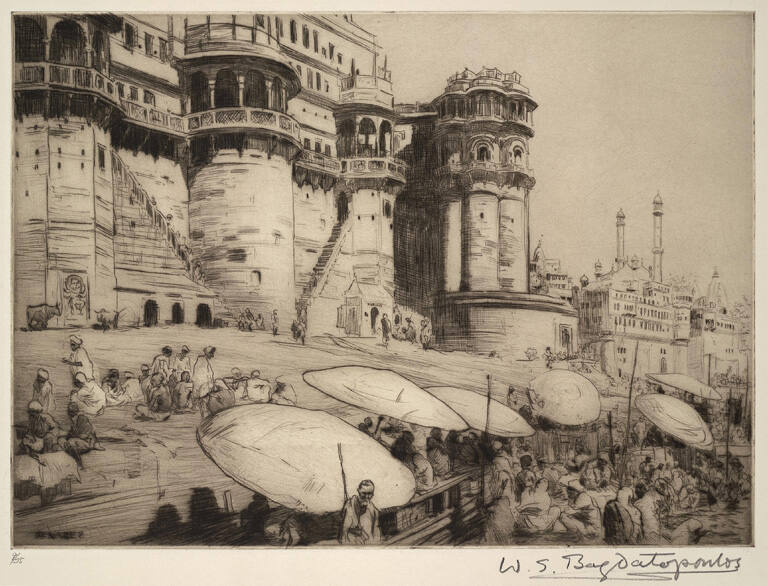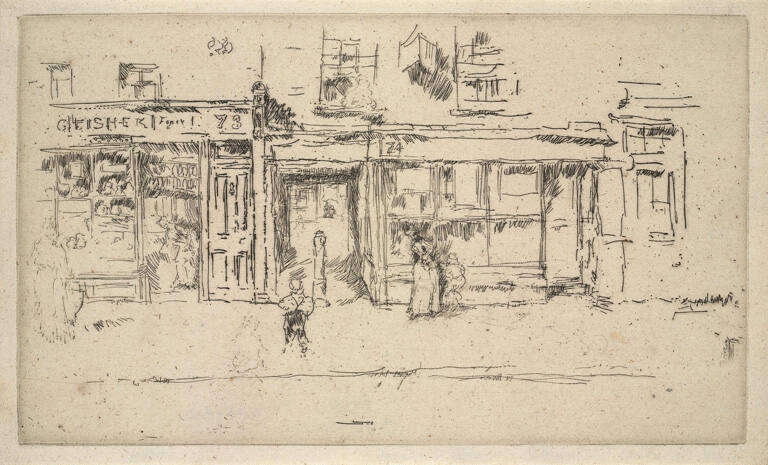
Object Details
Artist
William Spencer Bagdatopoulos
Medium
Etching
Credit Line
Bequest of William P. Chapman, Jr., Class of 1895
Object
Number
62.0829
Views of Benares (now known as Varanasi, or Kashi) on the river Ganga (Ganges) in North India charac(…)
Views of Benares (now known as Varanasi, or Kashi) on the river Ganga (Ganges) in North India characterize much of colonial-era artistic representation. The city, typically presented as an essentialist and eternal place, is a pivotal cartographical site for religion, trade, commerce, and politics for both Hindus and Muslims. Here imposing havelis (mansions) border the ghats (riverfront embankments), which are flocked by robed pilgrims and sadhus (ascetics) crouched in different groupings. Devotees continually reshape the city, along with residents, both of whom hail from myriad backgrounds.
The city lies on the tirtha (pilgrimage route) with Prayagraj (once known as Allahabad) and Gaya, dedicated to Shiva, the Hindu God of the Universe. It is a densely and intricate-built environment layered with havelis, homes, mutts/mathas (monasteries), dharamsalas (resting places) for pilgrims, bathing tanks, temples, mosques, Buddhist sites, ghats, music, dance and other arts and crafts centers such as weaving and woodwork, printing presses, stores selling silk, perfumes, medicine. These structures are linked by a network of galis (lanes), weaving a rich tapestry of cultural life.
The mansions shown here are embellished with jharokhas (outward windows). In the far right, we see outlines of more havelis, temples, and minarets of the Dharhara mosque.
—Ayesha Matthan, PhD candidate
Discover More
View of the Piazza Navona on the Ruins of the Circus Agonalis, from the Vedute di Roma (Views of Rome)
Giovanni Battista Piranesi












